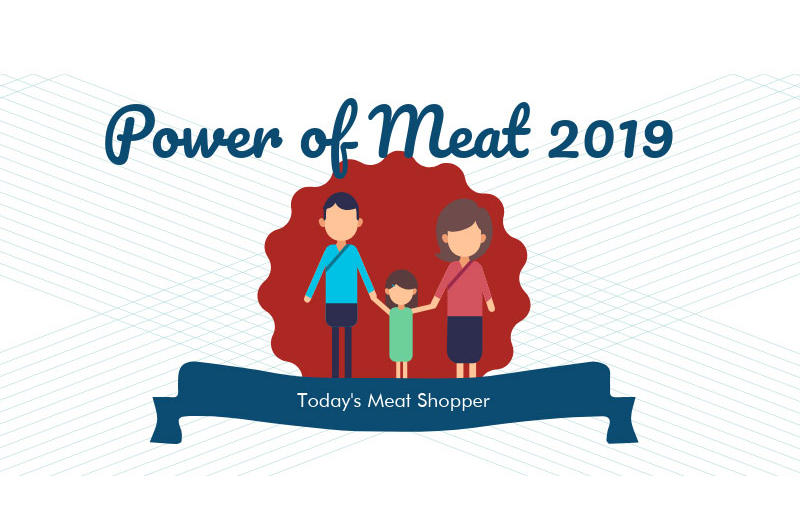Food Marketing Institute (FMI) and the Foundation for Meat and Poultry Research and Education—the foundation for the North American Meat Institute—have released The Power of Meat 2019, the 14th annual exploration into how to best optimize meat and poultry’s role in today’s food culture: the way we eat, shop and live. The report examines the $67 billion category and meat’s overall role in supporting a food retailer’s reputation.
Rethinking the meat meal occasion promotion
The analysis suggests that food retailers and their meat supplier partners should align their thinking with the shopper who considers his/her meat purchase as a meal occasion and not necessarily relegated to one area of the store. Consumers increasingly shop across the full meat offering, from the meat case and counter to the frozen aisle and deli.
Across all departments, convenience-focused meat and poultry saw robust growth in 2018, including value-added (+5.1 percent), fully-cooked (+2.5 percent) and frozen (+2.2 percent).
The report urges retailers and suppliers to consider new ways to help shoppers plan multiple meal meat purchases. Currently, 4-in-10 shoppers buy meat/poultry for meals to cover several days; 35 percent buy more than they need to freeze and use over time; and 23 percent, particularly Gen Z and younger Millennials, buy meat and poultry for one meal at a time.
Meat purchase planning: embracing digital communications
After a 13-year run, the printed circular read pre-trip is no longer the most frequently used promotional platform. The print ad is surpassed by checking in-store promotional signage. Digital, social and mobile are growing as well, such as a digital version of the traditional circular (up 38 percent), in-store app (up 24 percent) and social media deals (up 12 percent).
This erosion of the printed circular’s dominance suggests a need for considering creative new ways of engaging the meat shopper. According to the survey, while 52 percent of shoppers decide on what they’ll purchase in-store, 23 percent decide long before setting foot in the meat department.
“The trends point to opportunities for retailers and the suppliers to collaborate on ways to both educate and inspire our shoppers,” said FMI VP of Fresh Foods Rick Stein. “The onus is on us to turn the ordinary into extraordinary, as 74 percent of shoppers are looking for something as simple as flipping routine meals that they already know how to cook into a different culinary experience.”
Shopping for health
Shoppers are increasingly turning to food to help manage health and well-being. They seek to understand what is in their food, who made it and how it was produced, and meat is no exception. In the meat department, two thirds of shoppers look for better-for-me items and around three in 10 look for products that are better for the planet, farmers, workers or animals.
Eighty-six percent of U.S. shoppers interviewed describe themselves as meat eaters, but the data suggest a younger generation is increasingly reporting a flexitarian regime, categorized as a mostly vegetarian diet with occasional meat and poultry consumption. For instance, among Generation Z, 13 percent eat a flexitarian diet versus just 6 percent of Boomers. Women, at 15 percent, are also more likely to be flexitarians than men, at 6 percent.
Interestingly, meat does not seem to benefit from increased consumer interest in protein as many are unaware of meat’s high protein content. Shoppers report to being open to blended alternatives such as beef and mushroom burgers, as 63 percent say they would “maybe” or “definitely” purchase blended meat and plant items.
Managing challenges to the category through greater transparency
The report articulates the educational opportunities for both the supplier and food retail industries as Americans take a variety of meat purchasing considerations into mind including environmental, animal welfare and their health.
“The meat industry has used many digital tools such as its MyMeatUp app to help shoppers choose products that fit their lifestyle and interests,” said Meat Institute President and CEO Julie Anna Potts. “The findings underscore the need for ongoing efforts to not only share the many choices available in the meat case, but also continuing to innovate and focus on areas for improvement to further grow consumer trust.”
The Power of Meat was conducted by 210 Analytics and is made possible by Sealed Air’s Food Care Division. It was released March 3 at the annual Meat Conference in Dallas, Texas.

